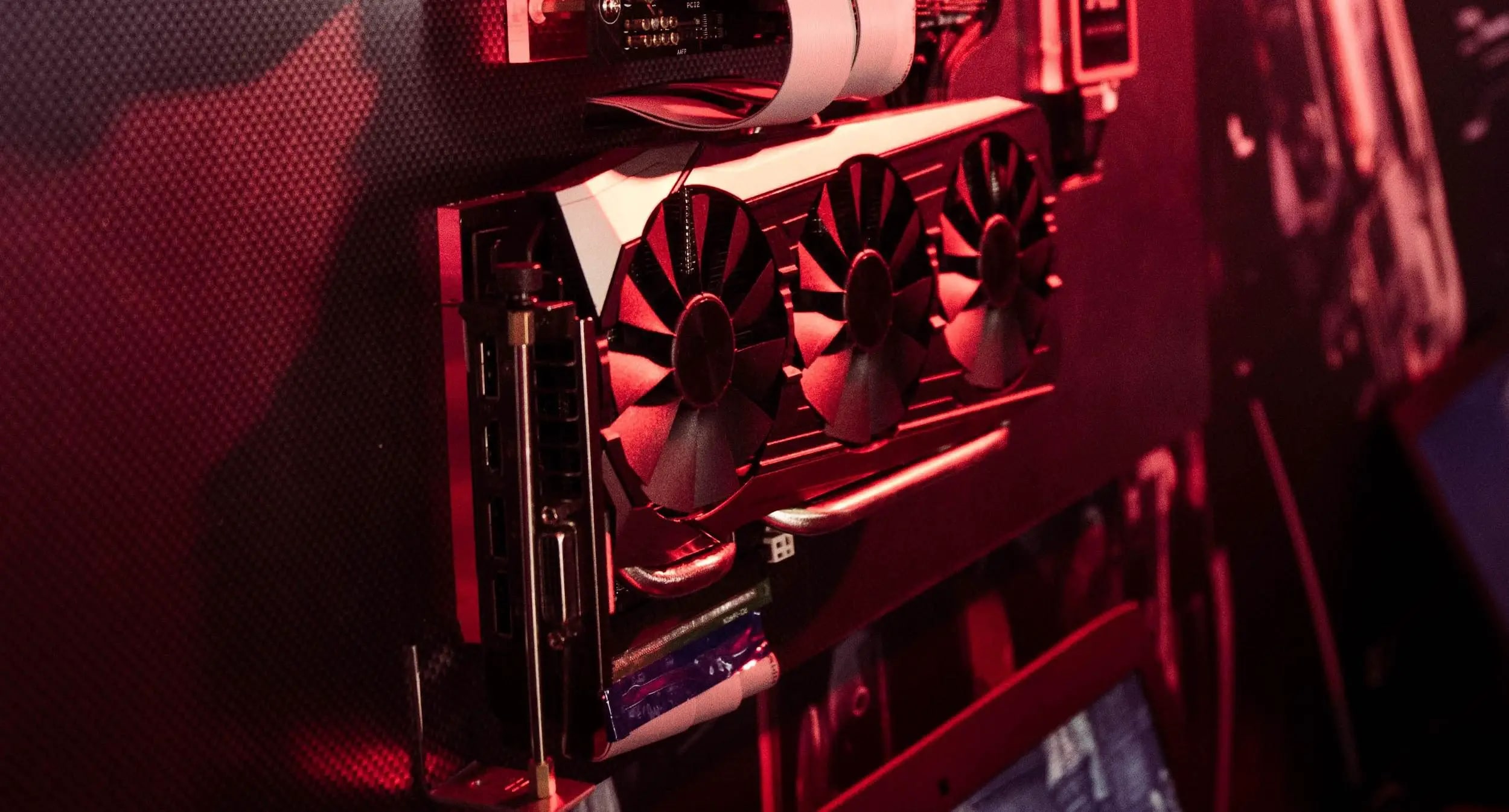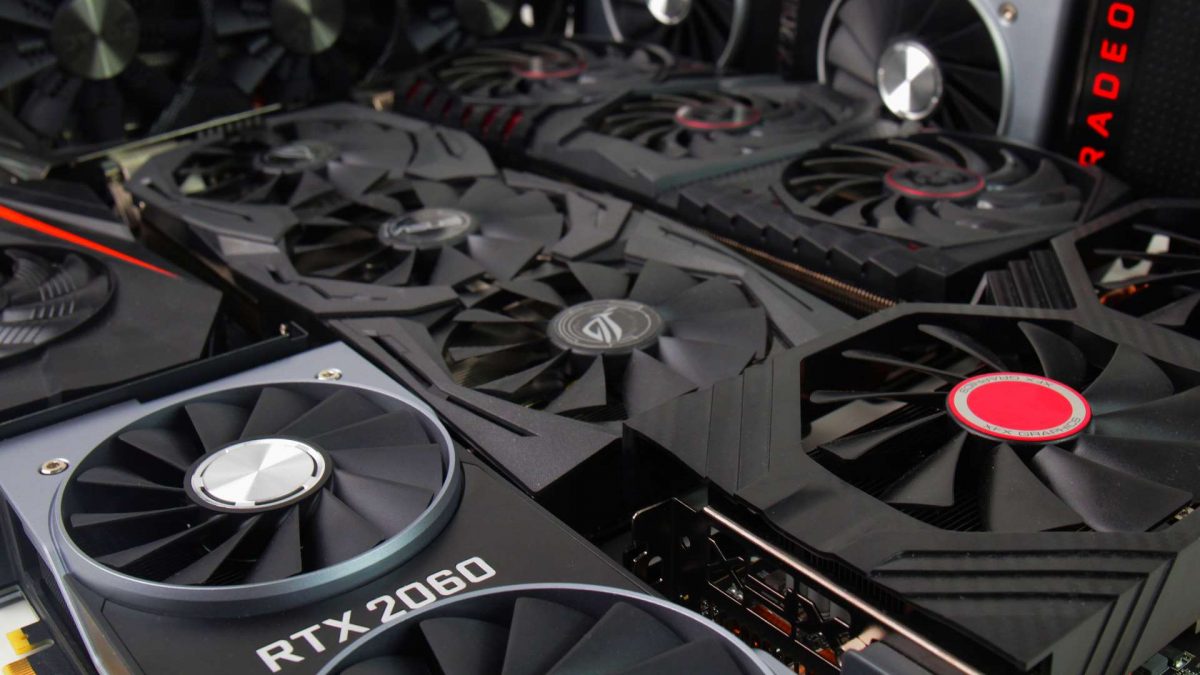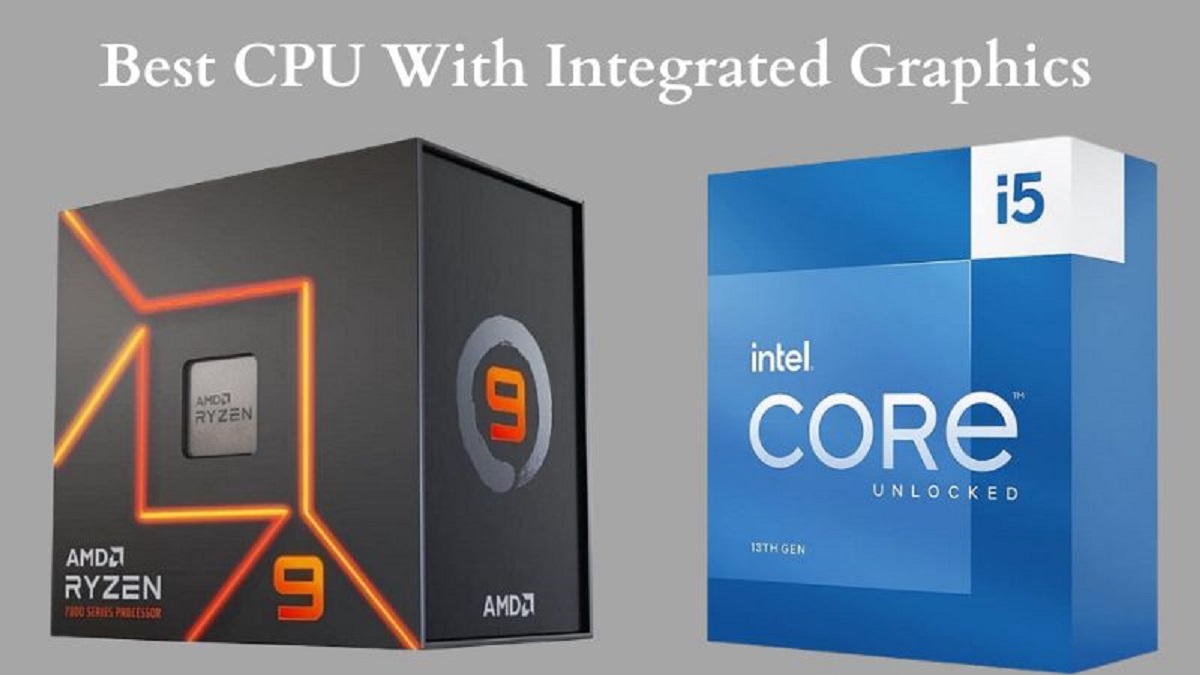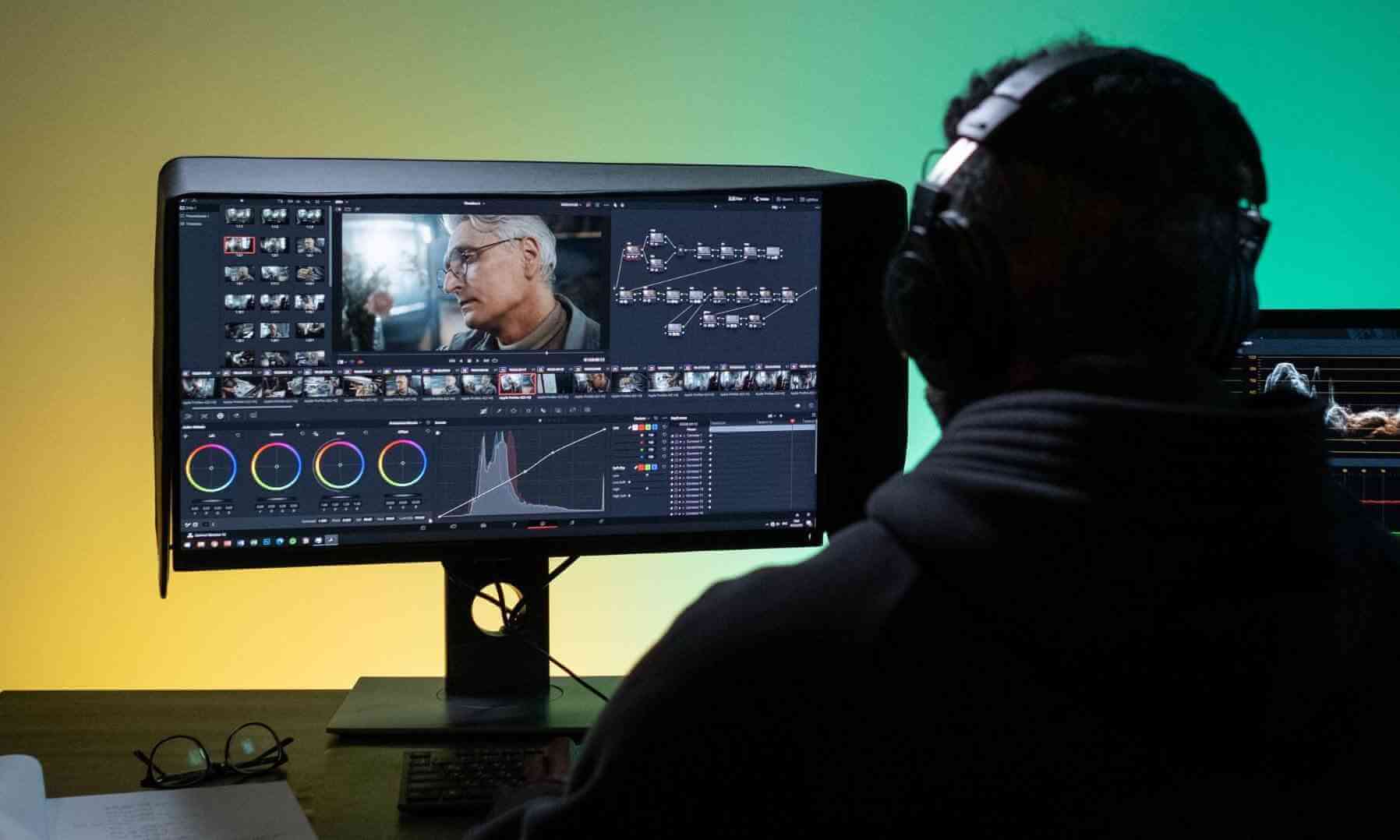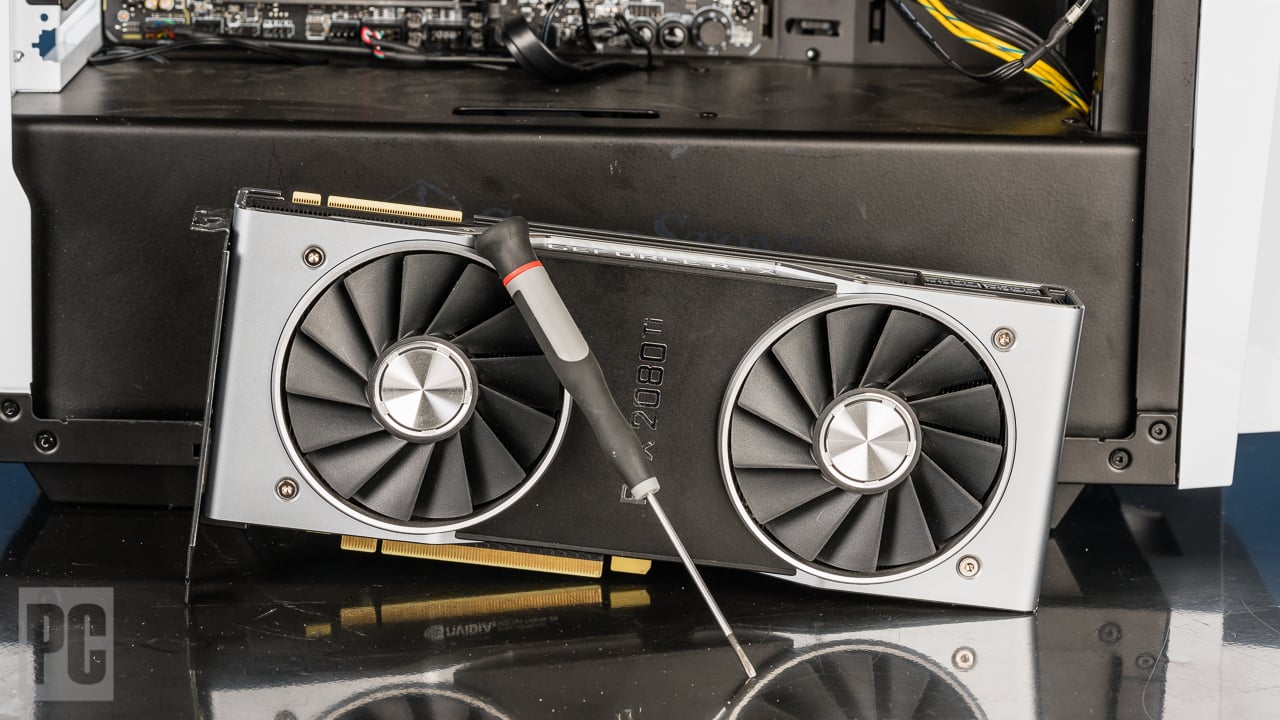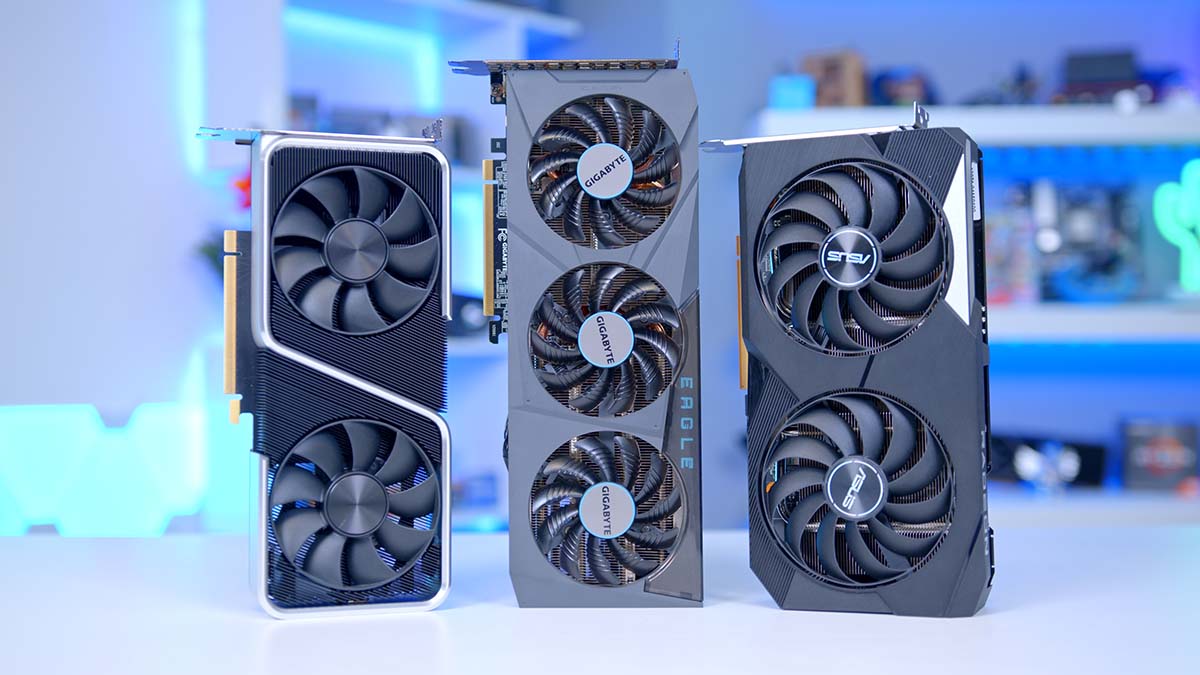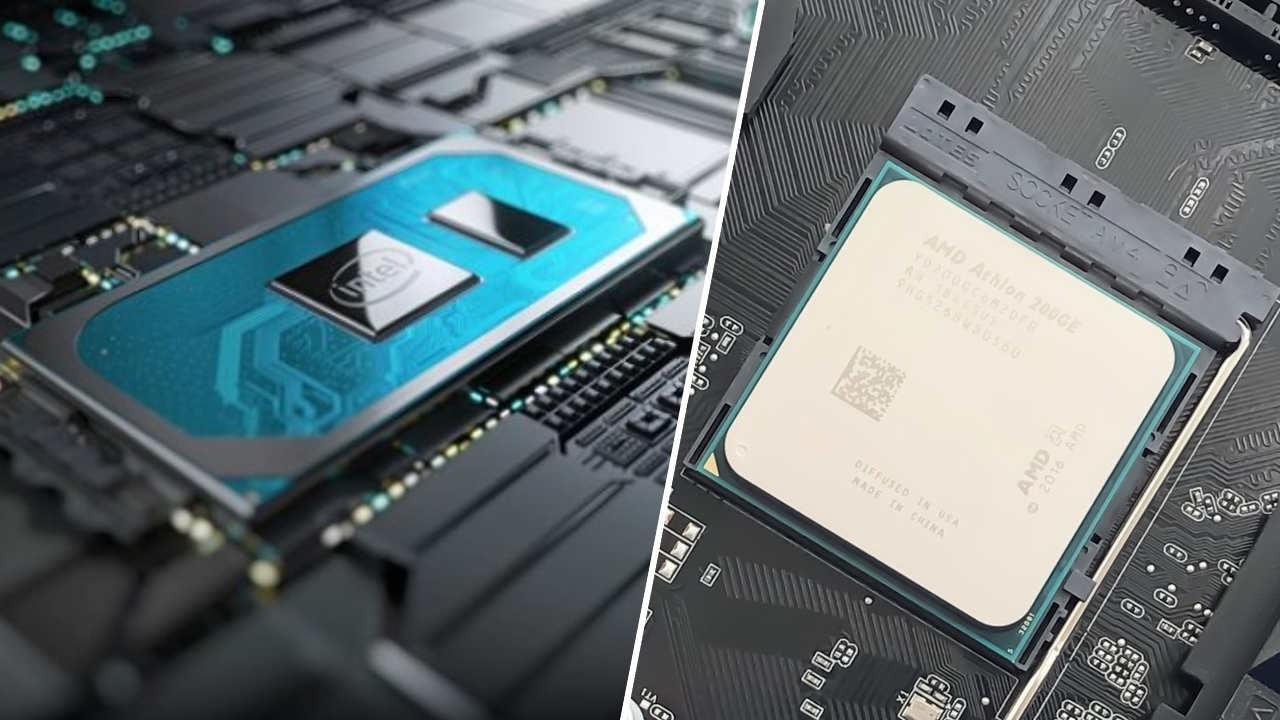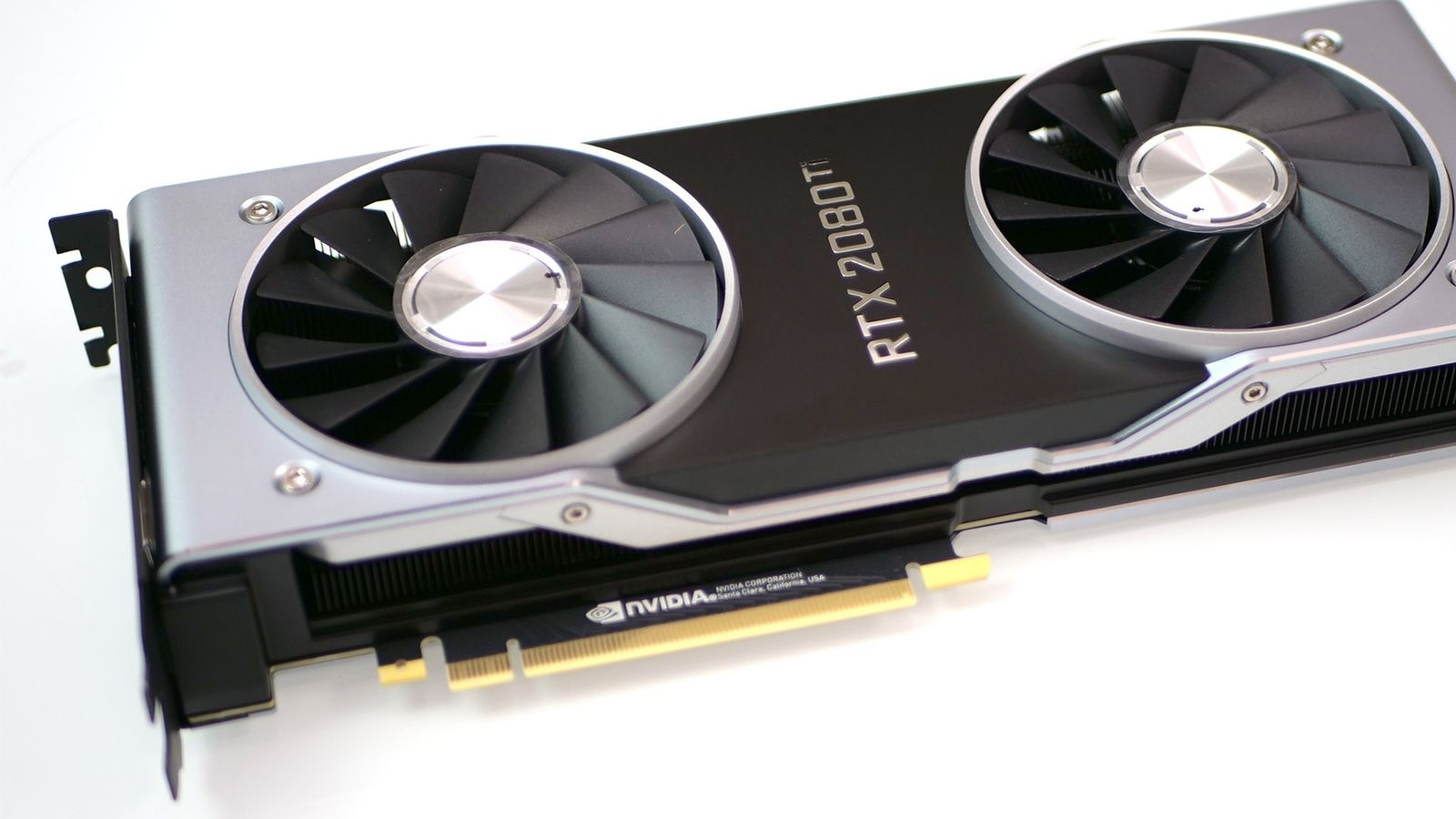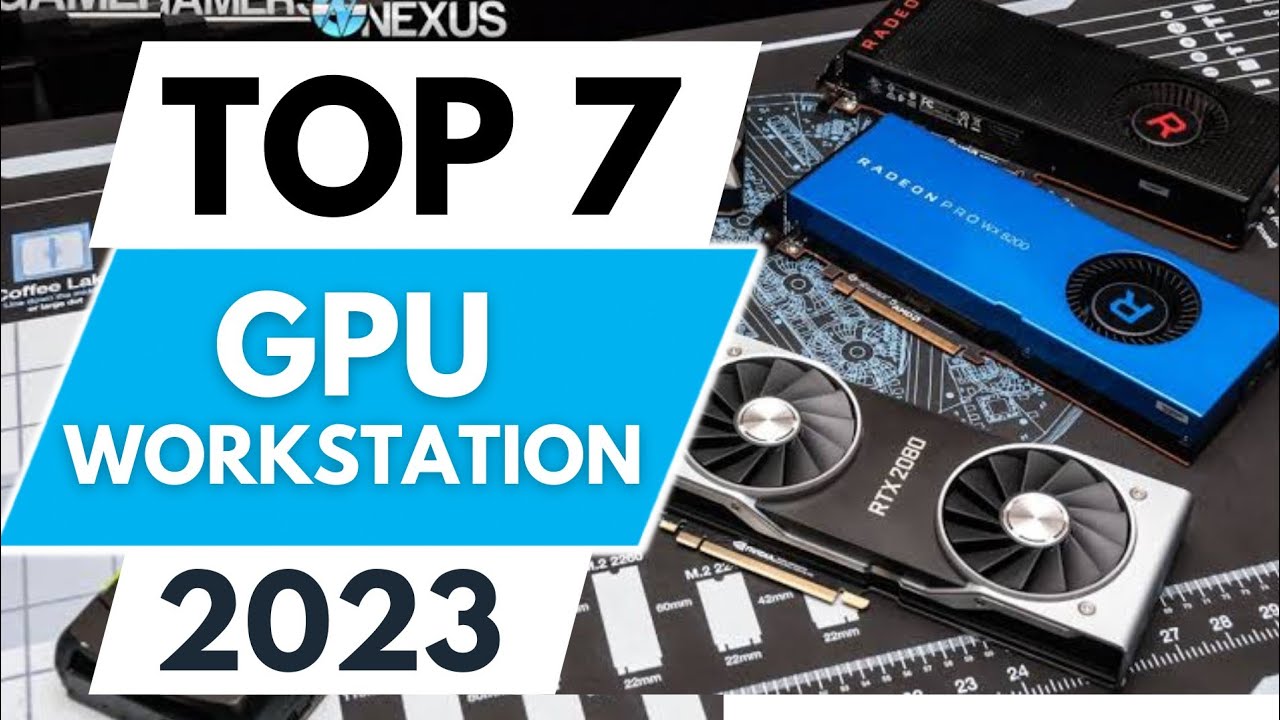Introduction
When it comes to video editing, having the right graphics card can make all the difference. Video editing is a resource-intensive task that requires a powerful computer system, and the graphics card plays a crucial role in ensuring smooth and efficient performance. The graphics card not only handles the display of your video editing software but also offloads processing tasks from the CPU, resulting in faster rendering times and smoother playback.
In recent years, video editing has become increasingly popular, with individuals and businesses creating and sharing high-quality video content across various platforms. Whether you are a professional videographer, a content creator, or simply someone passionate about video editing as a hobby, investing in a good graphics card is essential to achieve the best results.
In this article, we will explore the importance of graphics cards in video editing and provide insight into the factors to consider when choosing the best graphics card for your needs. We will also discuss some of the top graphics cards available on the market and compare the two leading brands, NVIDIA and AMD. Additionally, we will provide tips on optimizing your graphics card for video editing and help you determine an appropriate budget for your purchase.
By the end of this article, you will have a clear understanding of the role a graphics card plays in video editing and be equipped with the knowledge to make an informed decision when choosing the best graphics card for your video editing endeavors. So, let’s dive in and explore the world of graphics cards in video editing!
Understanding the Importance of Graphics Cards in Video Editing
Video editing is a complex process that involves manipulating and enhancing video footage to create a visually appealing and engaging end product. To accomplish this, video editing software relies heavily on the computer’s hardware, particularly the graphics card.
A graphics card, also known as a GPU (Graphics Processing Unit), is responsible for rendering and displaying images, animations, and videos on your screen. In the context of video editing, the graphics card’s primary role is to handle the real-time playback and rendering of video files. It takes the burden off the computer’s main processor (CPU), allowing for smoother editing, faster rendering, and more efficient workflow.
One of the key features that make graphics cards essential for video editing is their ability to accelerate certain tasks through parallel processing. Modern graphics cards are equipped with hundreds or even thousands of cores that can process multiple tasks simultaneously. This parallel processing power significantly speeds up tasks such as rendering complex effects, applying color corrections, and encoding video files.
Furthermore, graphics cards are equipped with dedicated video memory, known as VRAM (Video Random Access Memory). VRAM allows the graphics card to store and access large amounts of data quickly, which is crucial when working with high-resolution video files. With ample VRAM, your graphics card can efficiently handle large video projects without experiencing slowdowns or performance bottlenecks.
Another aspect of video editing where graphics cards prove their worth is in supporting multiple monitors. Video editors often work with multiple windows and panels simultaneously, such as the timeline, preview window, effects panel, and more. A powerful graphics card can handle the increased display space without compromising performance, allowing for a seamless multitasking experience.
In addition to real-time playback and rendering, a graphics card also enhances the overall visual quality of video editing. It can enhance color accuracy, provide smoother playback at higher resolutions, reduce rendering artifacts, and allow for the use of advanced effects and transitions. All these factors contribute to more professional-looking videos with stunning visuals.
Having a powerful graphics card specifically designed for video editing is crucial for maximizing productivity and achieving the best results. It alleviates the strain on the CPU and ensures efficient processing, smooth playback, and faster rendering times. Whether you are working on simple edits or complex visual effects, a high-quality graphics card plays a vital role in elevating the quality and efficiency of your video editing workflow.
Factors to Consider When Choosing a Graphics Card for Video Editing
Choosing the right graphics card for video editing can greatly impact the speed, efficiency, and quality of your editing workflow. Here are some crucial factors to consider when making your decision:
1. Performance and Processing Power: Look for a graphics card with a high number of CUDA cores (for NVIDIA) or stream processors (for AMD). These cores handle the parallel processing required for rendering and effects processing. Higher core counts generally result in faster rendering times and smoother playback.
2. VRAM Capacity: Video editing requires working with large and high-resolution files. Ensure that the graphics card has sufficient VRAM to handle your editing needs. Aim for a minimum of 4GB but consider opting for 8GB or more if you work with 4K or higher resolution videos.
3. Compatibility: Check if the graphics card is compatible with your computer system, including the motherboard and power supply. Consider the physical dimensions of the graphics card to ensure it fits into your computer’s case.
4. Software Compatibility: Verify that the graphics card is compatible with your video editing software. Some software, such as Adobe Premiere Pro or DaVinci Resolve, may have specific requirements or recommendations for graphics cards.
5. Support for GPU Acceleration: GPU acceleration is crucial for optimizing video editing performance. Ensure that the graphics card supports CUDA (for NVIDIA) or OpenCL (for AMD) to take advantage of hardware acceleration features in your editing software.
6. Cooling and Noise: Video editing can put a heavy load on the graphics card, resulting in increased heat generation. Look for graphics cards with efficient cooling solutions, such as multiple fans or liquid cooling, to maintain performance and prevent overheating. Additionally, consider the noise level generated by the graphics card, especially if you work in a quiet environment.
7. Price-to-Performance Ratio: Graphics cards vary in price, and it’s essential to find a balance between your budget and performance needs. Consider the performance benchmarks of different graphics cards to determine the best value for your investment.
8. Future-Proofing: Video editing technology is constantly evolving. Consider future-proofing your setup by choosing a graphics card that supports the latest standards, such as HDMI 2.1 or DisplayPort 1.4, and has room for future upgrades.
By considering these factors, you can make an informed decision when choosing a graphics card for video editing. Remember that your choice should align with your specific video editing requirements, ensuring smooth performance, faster rendering times, and high-quality output for your projects.
Top Graphics Cards for Video Editing
When it comes to video editing, having a powerful graphics card can significantly enhance your editing capabilities and workflow. Here are some of the top graphics cards that are highly recommended for video editing:
1. NVIDIA GeForce RTX 3080: The RTX 3080 is a high-end graphics card that offers outstanding performance for video editing tasks. With its 8704 CUDA cores and 10GB or 20GB of VRAM, it can handle demanding video editing projects with ease. It also supports real-time ray tracing and AI-enhanced processing, providing an added level of realism and efficiency.
2. AMD Radeon RX 6800 XT: The RX 6800 XT is a flagship graphics card from AMD that excels in video editing. With 4608 stream processors and 16GB of GDDR6 memory, it offers excellent performance and smooth playback. It also supports hardware-accelerated encoding and decoding, making it a great choice for content creators.
3. NVIDIA GeForce RTX 3070: The RTX 3070 is a more affordable option that still delivers impressive performance. With its 5888 CUDA cores and 8GB of VRAM, it can handle demanding video editing tasks with ease. It also supports real-time ray tracing and DLSS (Deep Learning Super Sampling) for improved performance and visual quality.
4. AMD Radeon RX 6700 XT: The RX 6700 XT offers excellent performance and value for video editing. With 2560 stream processors and 12GB of GDDR6 memory, it can handle most video editing tasks without breaking a sweat. Its energy-efficient design and support for AMD’s Radeon software ecosystem make it a popular choice among video editors.
5. NVIDIA GeForce GTX 1660 Ti: The GTX 1660 Ti is a mid-range graphics card that offers excellent value for video editing. With its 1536 CUDA cores and 6GB of GDDR6 memory, it can handle most video editing tasks with ease. While it may not have the latest features like ray tracing, it still provides a smooth editing experience at an affordable price point.
Remember, the choice of a graphics card ultimately depends on your specific needs and budget. These recommendations serve as a starting point, but it’s essential to consider factors such as software compatibility, VRAM capacity, and performance benchmarks when making your decision. Additionally, ensure that your computer system meets the power and compatibility requirements for the chosen graphics card.
By selecting one of these top graphics cards for video editing, you can unlock the full potential of your editing software, streamline your workflow, and achieve professional-quality results in your video projects.
NVIDIA vs AMD: Which Graphics Card Brand is Better for Video Editing?
When it comes to choosing a graphics card for video editing, two prominent brands dominate the market: NVIDIA and AMD. Both offer a range of graphics cards with different specifications and performance levels. Here, we will explore the strengths of each brand to help you make an informed decision.
NVIDIA graphics cards have long been favored by video editors due to their excellent performance and software support. NVIDIA’s CUDA technology allows for efficient parallel processing, resulting in faster rendering times and smoother playback. Their latest RTX series also introduced real-time ray tracing and AI-enhanced processing, further enhancing video editing capabilities.
On the other hand, AMD has made significant strides in recent years with their Radeon graphics cards. AMD’s GPUs, equipped with their RDNA or RDNA2 architecture, provide impressive performance in video editing tasks. AMD graphics cards excel in handling large amounts of data, thanks to their high memory bandwidth and large VRAM capacities. They also offer robust support for AMD’s Radeon software ecosystem, providing additional features and optimizations for video editing workflow.
The decision between NVIDIA and AMD ultimately comes down to your specific needs and budget. Here are some key factors to consider when choosing between the two:
Performance: NVIDIA graphics cards, particularly their high-end models, often outperform AMD counterparts in benchmarks and real-world video editing tasks. If you require the utmost performance and have a higher budget, NVIDIA might be the better choice.
Software Compatibility: NVIDIA has long had better software support from video editing applications, such as Adobe Premiere Pro and DaVinci Resolve. Some software features, like GPU-accelerated effects, may be optimized specifically for NVIDIA cards. However, AMD has been working to improve software compatibility and offers solid support for major video editing software as well.
Affordability: AMD graphics cards, especially in the mid-range segment, often offer better value for the price. If you have a limited budget but still require reliable performance, an AMD GPU may be a more cost-effective option.
Future-Proofing: Both NVIDIA and AMD regularly release new graphics card models with improved performance, features, and technology support. Consider your future needs and whether a particular brand aligns better with your long-term requirements.
Ultimately, the recommended choice for video editing depends on your specific needs and priorities. NVIDIA provides excellent performance and software support, while AMD offers cost-effective options with impressive performance and increasing software compatibility. Conducting thorough research and comparing the specifications and benchmarks of various models will help you make an informed decision.
It’s also worth noting that personal preferences, brand loyalty, and individual experiences can influence the choice between NVIDIA and AMD. Ultimately, the best graphics card for video editing is the one that suits your specific requirements and budget while providing the necessary performance and features to enhance your editing workflow.
How Much Should You Spend on a Graphics Card for Video Editing?
The price range for graphics cards can vary significantly, from budget-friendly options to high-end models offering cutting-edge performance. Determining how much to spend on a graphics card for video editing depends on several factors, including your budget, the complexity of your editing projects, and your future needs.
Budget Considerations: The first factor to consider is your budget. Determine how much you are willing to invest in a graphics card without exceeding your financial limits. Remember that a higher budget can provide access to more powerful and feature-rich graphics cards, but you can still find capable options within the mid-range and entry-level price tiers.
Editing Needs: The complexity and scale of your video editing projects play a crucial role in determining the necessary level of graphics card performance. If you primarily work with basic edits and standard definition videos, a mid-range graphics card should suffice. However, for handling high-resolution videos, complex effects, and real-time rendering, you might need to invest in a higher-end graphics card for smoother performance and faster rendering times.
Future-Proofing: Consider your future needs when deciding on a budget for your graphics card. If you plan to work with higher resolution videos or more demanding editing tasks in the future, it may be worth investing in a more powerful graphics card now to avoid the need for an upgrade in the near future. Investing in a future-proof graphics card can save you money in the long run by extending its lifespan before needing an upgrade.
Comparison and Research: To make an informed decision, compare the performance benchmarks, features, and prices of different graphics cards. Look for reviews and recommendations from reputable sources to gain insights into the performance of different models within your budget range. Additionally, consider the specific requirements and recommendations of your chosen video editing software, as some applications may favor certain graphics cards or require specific features for optimal performance.
Considerations Beyond the Graphics Card: Remember that a graphics card is just one component of your overall video editing setup. To maximize its performance, ensure that your computer system has sufficient RAM, a powerful CPU, and adequate storage capacity. A well-balanced system will help you avoid bottlenecks and optimize the performance of your graphics card.
In summary, the ideal budget for a graphics card depends on factors such as your budget, editing needs, future-proofing considerations, and thorough research. It is worth investing in a graphics card that meets your current requirements while considering its potential to handle future video editing projects. By finding the right balance between performance and budget, you can enhance your video editing experience without breaking the bank.
Tips for Optimizing Your Graphics Card for Video Editing
Optimizing your graphics card for video editing can significantly improve your editing workflow and overall performance. Here are some tips to help you get the most out of your graphics card:
1. Keep Graphics Drivers Updated: Regularly update your graphics card drivers to ensure compatibility with the latest video editing software and to take advantage of any performance optimizations or bug fixes. Check the manufacturer’s website or use their software to ensure you have the latest drivers installed.
2. Adjust Power Settings: In your computer’s power management settings, select the high-performance mode or a power plan that prioritizes performance. This ensures that your graphics card operates at its maximum potential during resource-intensive video editing tasks.
3. Configure GPU Acceleration: Enable GPU acceleration in your video editing software settings. This allows your graphics card to assist in rendering and processing tasks, resulting in faster performance. Check your software documentation or preferences to locate the GPU acceleration settings.
4. Optimize VRAM Usage: Video editing often requires working with large files that can consume significant amounts of VRAM. Ensure that your graphics card has enough VRAM to handle your projects comfortably. Close any unnecessary applications or background processes to free up VRAM for your editing software.
5. Monitor Temperature and Cooling: Video editing tasks can put a strain on your graphics card, leading to increased temperatures. Monitor the temperature using software utilities and ensure that your system is adequately cooled. Clean any dust accumulation on the fans or heatsinks to maintain optimal cooling performance.
6. Utilize Hardware Encoding: Many modern graphics cards support hardware encoding technologies (such as Nvidia’s NVENC or AMD’s VCE) that offload encoding tasks from the CPU to the graphics card. Enable hardware encoding in your video editing software settings for faster exporting and rendering times.
7. Optimize Display Settings: Adjust your display settings to maximize performance and visual quality. Set your monitor’s resolution to match the output resolution of your video editing projects. Calibrate the color accuracy of your monitor using calibration tools or software for accurate video editing.
8. Close Unnecessary Background Applications: Close any unnecessary background applications, especially those that consume significant system resources. This ensures that the graphics card is dedicated to your video editing software and prevents competing processes from slowing down performance.
By implementing these optimization tips, you can ensure that your graphics card is running at its full potential and provide optimal performance for your video editing tasks. Remember to periodically check for software updates, keep an eye on temperature and cooling, and maintain an efficient workflow to take advantage of your graphics card’s capabilities.
Conclusion
Choosing the right graphics card for video editing is a crucial decision that can significantly impact the speed, efficiency, and quality of your editing workflow. A powerful graphics card can enhance real-time playback, accelerate rendering times, and improve visual quality, making it an essential component of any video editing setup.
Throughout this article, we have explored the importance of graphics cards in video editing and discussed various factors to consider when choosing the best graphics card for your needs. We have highlighted some of the top graphics cards available on the market, compared NVIDIA and AMD, and provided tips for optimizing your graphics card for video editing.
When selecting a graphics card, it is important to consider factors such as performance, VRAM capacity, software compatibility, compatibility with your computer system, and budget. By evaluating these factors, you can make an informed decision that aligns with your specific video editing requirements.
Remember, the choice between NVIDIA and AMD depends on various factors, including performance benchmarks, software compatibility, and price. Both brands offer reliable options for video editing, so it’s important to choose based on your individual needs and priorities.
Additionally, optimizing your graphics card for video editing is key to ensuring smooth performance and efficient workflow. Keeping drivers updated, adjusting power settings, utilizing GPU acceleration, and monitoring temperature and cooling are just a few ways to maximize your graphics card’s potential.
In conclusion, investing in a high-quality graphics card is essential for video editing enthusiasts and professionals alike. By selecting the right graphics card and optimizing its performance, you can take your video editing projects to the next level, ensuring seamless playback, faster rendering times, and stunning visual results. So, whether you are a beginner or an experienced video editor, make sure to choose a graphics card that meets your needs and enjoy the enhanced editing experience it brings.







